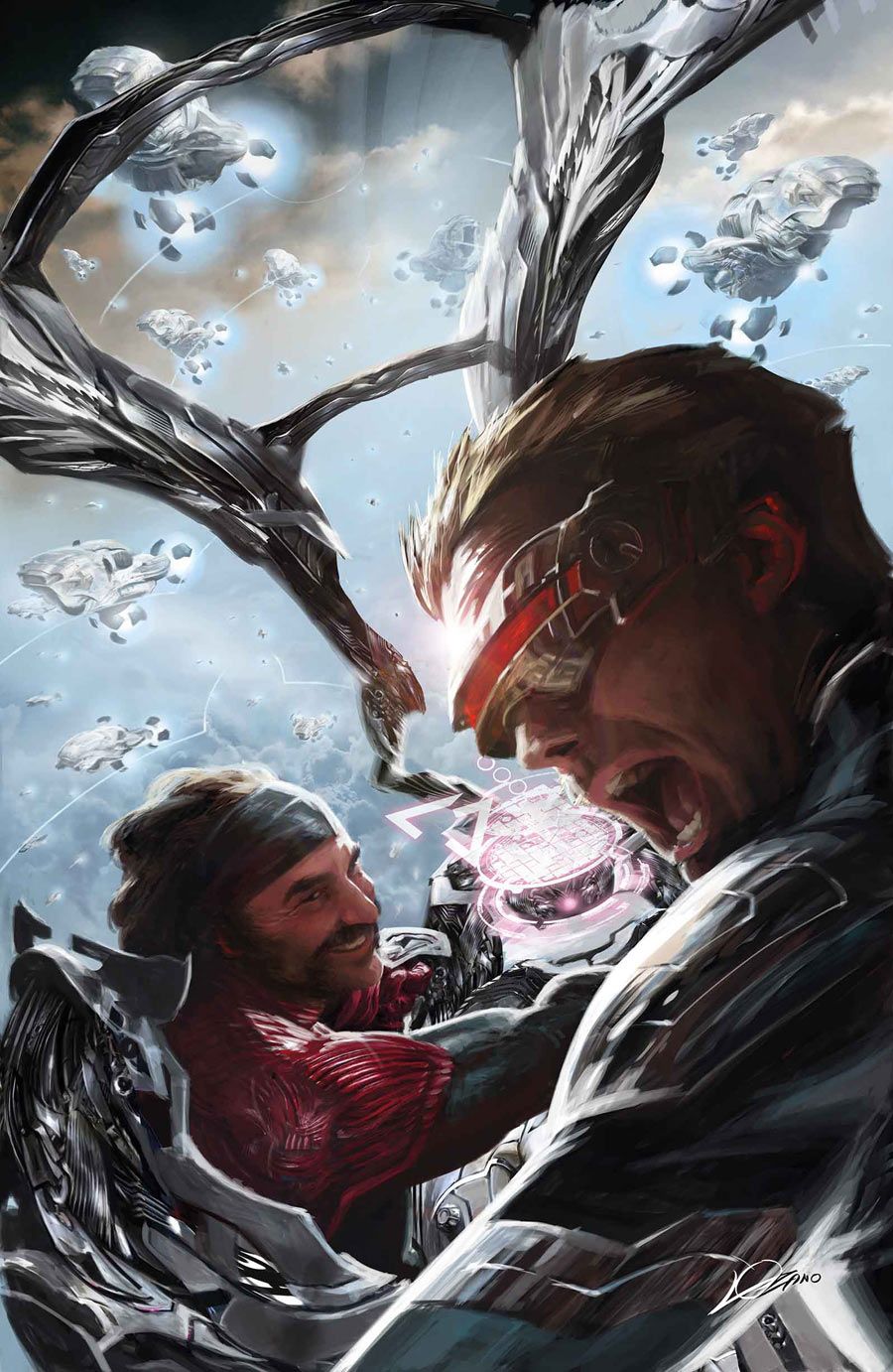In "Cyclops" #3, writer Greg Rucka and artist Russell Dauterman continue to develop the relationship between Scott Summers and his dad, Chris. Rucka doesn't dictate how this should be done and, as a matter of fact, steps out of the way to let Dauterman stride through the story.
Through Dauterman's art, the uneasiness between Cyclops and Corsair is visible. Rucka doesn't need to tell the readers what's going on, so instead of narrating the relationship like play-by-play commentary, Rucka sets things up in a reflective journal entry. The apprehension later seizes an opening to blossom into full-fledged fear, which Rucka has not only planted, but harvests to take "Cyclops" #3 to an emotional point that readers might not expect. I cannot speculate how much of himself Rucka is projecting into either character, but the emotions present in this comic book certainly have root in the writer's life, making them all the more palpable.
Dauterman perfectly transmits the emotions of the characters, but also dictates the level of anxiety in the story through page layout and panel construction. Like the cock-eyed camera angles from the original "Star Trek" or "Batman" television shows, Dauterman's panels pitch across the page, generating uncertain white space while accentuating the action and agitation in the panels. In lock-step with Dauterman, Chris Sotomayor's colors become more psychedelically alien the closer the Summers' ship comes to a crash-landing, culminating in wild magentas, fuchsias, teals and blues once they hit the ground. The blues are lighter in tone and aid Dauterman and Rucka in their investigation of Corsair's troubled past. Letterer Joe Caramagna has a lighter load throughout this issue, with more than a few panels and at least a pair of pages completely void of words or sound effects. Rucka, Dauterman and Sotomayor carry those scenes magnificently. When pressed into duty, however, Caramagna shows readers that he is one of the very best letterers when it comes to spirited discussions, with characters exchanging dialog over each other, visually noted by the balloons' relative presence to one another.
"Cyclops" #3 is an emotionally charged issue that works into the relationship between Corsair and Cyclops to great effect. Dauterman and Sotomayor bring their very best, helping visually elevate this comic book from others on the rack. Combining with the imagination of Rucka as he analyzes a father-son bond, the creative team has found a way to make Cyclops -- and younger Cyclops nonetheless -- a character I look forward to reading about every month. Regardless of readers' familiarity or interest in Cyclops or Corsair, this comic book is emotionally charged and easy to relate to, proving that any character can be an interesting character is handled the right way. And drawn by the right artist.

